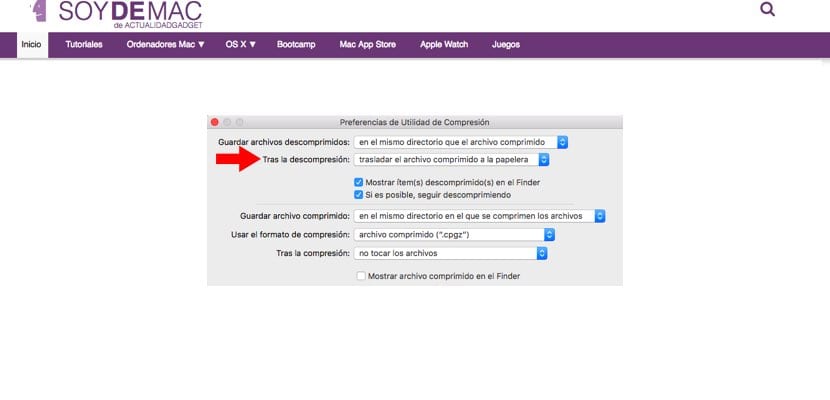
You may have noticed that after extracting the compressed files in ZIP, the compressed file remains in the destination where all your downloads are stored. And if you want to get rid of it you have to manually go to the location and delete it manually; that is, send it to the trash on your Mac. However, this option can be changed so that after opening the ZIP file, the compressed file goes directly to the system trash.
If we are not too orderly with our Mac and we usually make use of enough compressed files, it is sure that when we carry out the extraction we will forget to discard the ZIP file to the trash. This, if we do it repeatedly, we can begin to occupy more space than usual on our hard drive. Nevertheless, the Mac tool to carry out the extraction will allow us to send the ZIP file to the trash automatically. We explain how.

As you well know, macOS has a standard tool to decompress these types of files. What's more, even if you don't see it at first glance, when you give a .ZIP file the tool starts up. His name is "Compression Utility".
To find this tool we must go to the «Finder». In the bar on the left, find our hard drive and click on it. On the right hand side we will have all the records and files available. We must click on "System". And the only option that will appear is "Library". Click on this folder.
Now the list will be much more extensive. Go down and look for a folder that indicates "CoreServices". Picha over it and look for another folder under the name "Applications". And voilà, there we will have the «Compression Utility» tool with a green icon. Open the app and look for "Preferences" in the menu bar. There we will have the option we are looking for: "After decompression". Select the option that you like the most, but we recommend that it be "Move the compressed file to the trash".
It is a bit confusing the way in which you have described how to find the path where the utility is, it is easier to leave the path in this way than as you have written it
/ System / Library / CoreServices / Applications
It is more if you look for this route directly you do not have to navigate through the folders
http://s2.subirimagenes.com/imagen/previo/thump_9843527captura-de-pantalla.png